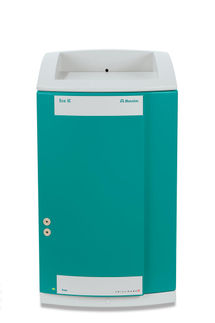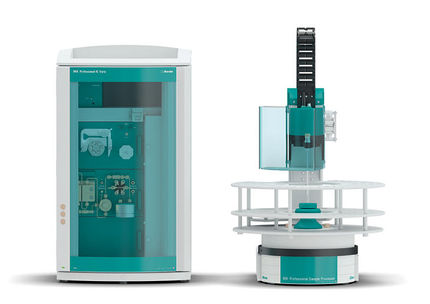| Synaptosomal-associated protein, 25kDa
|
|
|
| PDB rendering based on 1jth.
|
| Available structures: 1jth, 1kil, 1n7s, 1sfc, 1urq, 1xtg
|
| Identifiers
|
| Symbol(s)
| SNAP25; FLJ23079; RIC-4; RIC4; SEC9; SNAP; SNAP-25; bA416N4.2; dJ1068F16.2
|
| External IDs
| OMIM: 600322 MGI: 98331 Homologene: 13311
|
| Gene Ontology
|
| Molecular Function:
| • SNARE binding
|
| Cellular Component:
| • synaptosome
• synapse
|
| Biological Process:
| • neurotransmitter uptake
• synaptic transmission
• neurotransmitter secretion
• synaptic vesicle docking during exocytosis
• regulation of insulin secretion
|
|
| RNA expression pattern
|
|
More reference expression data
|
| Orthologs
|
|
| Human
| Mouse
|
| Entrez
| 6616
| 20614
|
| Ensembl
| ENSG00000132639
| ENSMUSG00000027273
|
| Uniprot
| P60880
| P60879
|
| Refseq
| NM_003081 (mRNA)
NP_003072 (protein)
| NM_011428 (mRNA)
NP_035558 (protein)
|
| Location
| Chr 20: 10.15 - 10.24 Mb
| Chr 2: 136.4 - 136.47 Mb
|
| Pubmed search
| [1]
| [2]
|
SNAP-25 (synaptosome-associated protein of 25,000 daltons) is a membrane bound protein anchored to the cytosolic face of membranes via palmitoyl side chains in the middle of the molecule. SNAP-25 is a Q-SNARE protein contributing two α-helices in the formation of the exocytotic fusion complex in neurons where it assembles with syntaxin-1 and synaptobrevin. SNAP-25 inhibits P/Q- and L-type voltage-gated calcium channels located presynaptically [1] and interacts with the synaptotagmin C2B domain in Ca2+-independent fashion [2]. In glutamatergic synapses SNAP-25 decreases the Ca2+ responsiveness, while it is naturally absent in GABAergic synapses [3].
Consistent with the regulation of synaptic Ca2+ responsiveness, heterozygous deletion of the SNAP-25 gene in mice results in a hyperactive phenotype similar to attention deficit hyperactivity disorder (ADHD). In heterozygous mice, a decrease in hyperactivity is observed with dextroamphetamine, the active ingredient of the ADHD drug Adderall®. Homozygous deletions of the SNAP-25 gene are lethal. Subsequent studies have suggested that at least some of the SNAP-25 gene mutations in humans might predispose to ADHD [4][5].
Botulinum toxins A, C and E cleave SNAP-25 [6] leading to paralysis in clinically developed botulism.
References
- ^
Hodel A (1998). "SNAP-25". The International Journal of Biochemistry & Cell Biology 30 (10): 1069-1073.
- ^
Chapman ER (2002). "Synaptotagmin: A Ca2+ sensor that triggers exocytosis?". Nature Reviews Molecular Cell Biology 3: 498-508.
- ^
Pozzi D, Verderio C, Patti L, Grumelli C, Inverardi F, Frassoni C, Bonanno G, Matteoli M (2004). "SNAP-25 modulation of calcium dynamics underlies differences in GABAergic and glutamatergic responsiveness to depolarization". Neuron 41 (4): 599-610.
- ^
Brophy K, Hawi Z, Kirley A, Fitzgerald M, Gill M (2002). "Synaptosomal-associated protein 25 (SNAP-25) and attention deficit hyperactivity disorder (ADHD): evidence of linkage and association in the Irish population". Molecular Psychiatry 7 (8): 913-917.
- ^
Mill J, Curran S, Kent L, Gould A, Huckett L, Richards S, Taylor E, Asherson P (2002). "Association study of a SNAP-25 microsatellite and attention deficit hyperactivity disorder". American Journal of Medical Genetics 114 (3): 269-271.
- ^
Aoki KR, Guyer B (2001). "Botulinum toxin type A and other botulinum toxin serotypes: a comparative review of biochemical and pharmacological actions". European Journal of Neurology 8: 21-29.
Further reading
- Hanson PI, Otto H, Barton N, Jahn R (1995). "The N-ethylmaleimide-sensitive fusion protein and alpha-SNAP induce a conformational change in syntaxin.". J. Biol. Chem. 270 (28): 16955-61. PMID 7622514.
- Hata Y, Südhof TC (1995). "A novel ubiquitous form of Munc-18 interacts with multiple syntaxins. Use of the yeast two-hybrid system to study interactions between proteins involved in membrane traffic.". J. Biol. Chem. 270 (22): 13022-8. PMID 7768895.
- Chapman ER, An S, Barton N, Jahn R (1994). "SNAP-25, a t-SNARE which binds to both syntaxin and synaptobrevin via domains that may form coiled coils.". J. Biol. Chem. 269 (44): 27427-32. PMID 7961655.
- Zhao N, Hashida H, Takahashi N, Sakaki Y (1994). "Cloning and sequence analysis of the human SNAP25 cDNA.". Gene 145 (2): 313-4. PMID 8056350.
- Bark IC, Wilson MC (1994). "Human cDNA clones encoding two different isoforms of the nerve terminal protein SNAP-25.". Gene 139 (2): 291-2. PMID 8112622.
- Maruyama K, Sugano S (1994). "Oligo-capping: a simple method to replace the cap structure of eukaryotic mRNAs with oligoribonucleotides.". Gene 138 (1-2): 171-4. PMID 8125298.
- Maglott DR, Feldblyum TV, Durkin AS, Nierman WC (1996). "Radiation hybrid mapping of SNAP, PCSK2, and THBD (human chromosome 20p).". Mamm. Genome 7 (5): 400-1. PMID 8661740.
- Ravichandran V, Chawla A, Roche PA (1996). "Identification of a novel syntaxin- and synaptobrevin/VAMP-binding protein, SNAP-23, expressed in non-neuronal tissues.". J. Biol. Chem. 271 (23): 13300-3. PMID 8663154.
- Rettig J, Sheng ZH, Kim DK, et al. (1996). "Isoform-specific interaction of the alpha1A subunits of brain Ca2+ channels with the presynaptic proteins syntaxin and SNAP-25.". Proc. Natl. Acad. Sci. U.S.A. 93 (14): 7363-8. PMID 8692999.
- Jagadish MN, Fernandez CS, Hewish DR, et al. (1996). "Insulin-responsive tissues contain the core complex protein SNAP-25 (synaptosomal-associated protein 25) A and B isoforms in addition to syntaxin 4 and synaptobrevins 1 and 2.". Biochem. J. 317 ( Pt 3): 945-54. PMID 8760387.
- Betz A, Okamoto M, Benseler F, Brose N (1997). "Direct interaction of the rat unc-13 homologue Munc13-1 with the N terminus of syntaxin.". J. Biol. Chem. 272 (4): 2520-6. PMID 8999968.
- Araki S, Tamori Y, Kawanishi M, et al. (1997). "Inhibition of the binding of SNAP-23 to syntaxin 4 by Munc18c.". Biochem. Biophys. Res. Commun. 234 (1): 257-62. doi:10.1006/bbrc.1997.6560. PMID 9168999.
- Lane SR, Liu Y (1997). "Characterization of the palmitoylation domain of SNAP-25.". J. Neurochem. 69 (5): 1864-9. PMID 9349529.
- Suzuki Y, Yoshitomo-Nakagawa K, Maruyama K, et al. (1997). "Construction and characterization of a full length-enriched and a 5'-end-enriched cDNA library.". Gene 200 (1-2): 149-56. PMID 9373149.
- Okamoto M, Südhof TC (1998). "Mints, Munc18-interacting proteins in synaptic vesicle exocytosis.". J. Biol. Chem. 272 (50): 31459-64. PMID 9395480.
- Low SH, Roche PA, Anderson HA, et al. (1998). "Targeting of SNAP-23 and SNAP-25 in polarized epithelial cells.". J. Biol. Chem. 273 (6): 3422-30. PMID 9452464.
- Poirier MA, Hao JC, Malkus PN, et al. (1998). "Protease resistance of syntaxin.SNAP-25.VAMP complexes. Implications for assembly and structure.". J. Biol. Chem. 273 (18): 11370-7. PMID 9556632.
- Prekeris R, Klumperman J, Chen YA, Scheller RH (1998). "Syntaxin 13 mediates cycling of plasma membrane proteins via tubulovesicular recycling endosomes.". J. Cell Biol. 143 (4): 957-71. PMID 9817754.
- Gonelle-Gispert C, Halban PA, Niemann H, et al. (1999). "SNAP-25a and -25b isoforms are both expressed in insulin-secreting cells and can function in insulin secretion.". Biochem. J. 339 ( Pt 1): 159-65. PMID 10085240.
- Ilardi JM, Mochida S, Sheng ZH (1999). "Snapin: a SNARE-associated protein implicated in synaptic transmission.". Nat. Neurosci. 2 (2): 119-24. doi:10.1038/5673. PMID 10195194.
|







